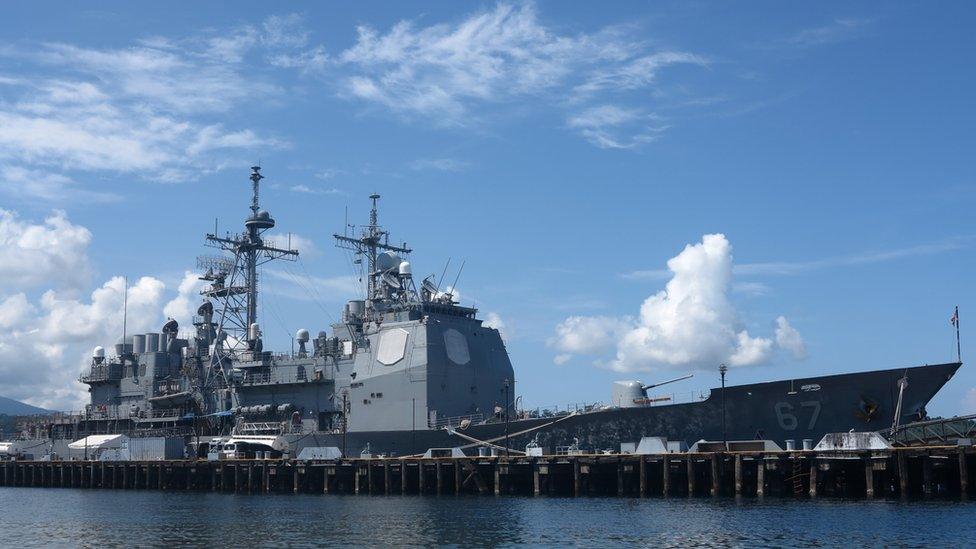What do 'hangars' on disputed islands in the South China Sea tell us?
- Published
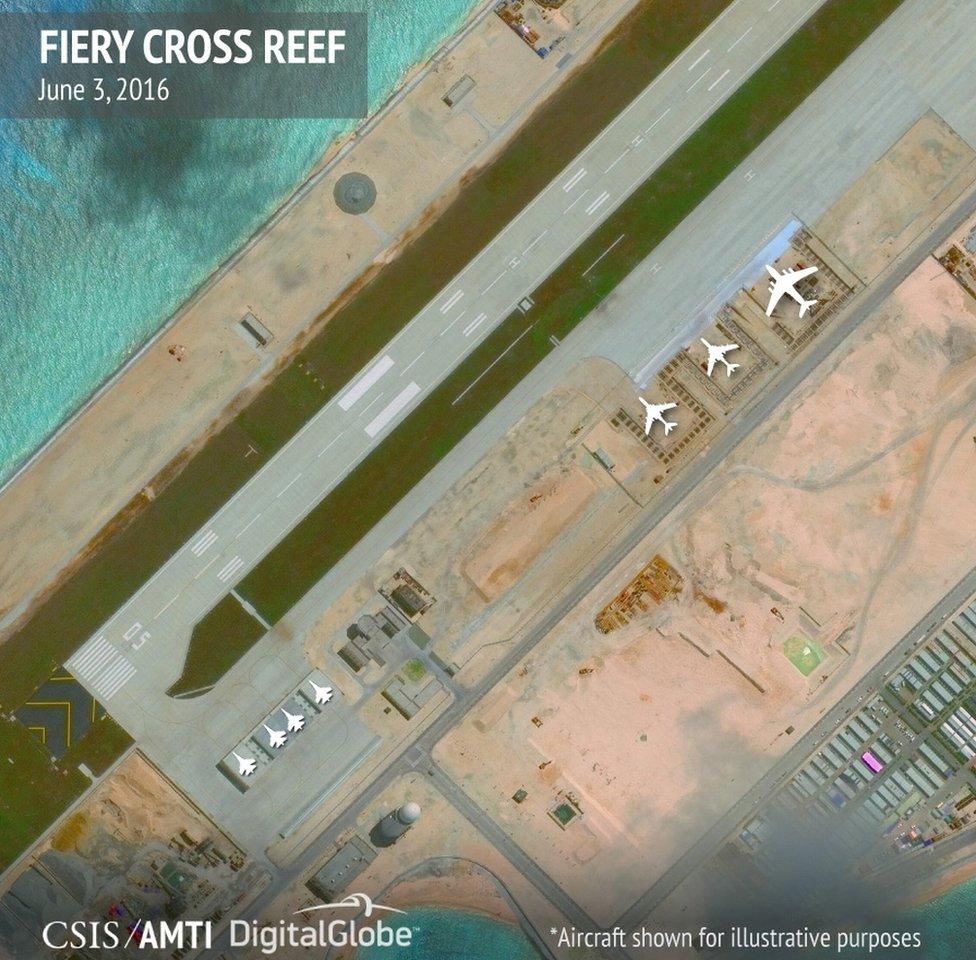
Satellite images appear to show China has built aircraft hangars on disputed islands in the South China Sea.
The images, from late July, were released by the Asia Maritime Transparency Initiative and appear to confirm that Chinese military fighter jets could, at some point, be based on Fiery Cross, Subi and Mischief Reefs.
The revelation is likely to stoke tension with neighbours and the US, all of whom have raised concerns over what they call "the militarisation of the South China Sea", says analyst Alexander Neill from the International Institute for Strategic Studies - Asia.
Read more:
What do the pictures show exactly?
These images show three new air bases built on artificial islands nearing completion in the Spratly islands at the heart of the South China Sea.
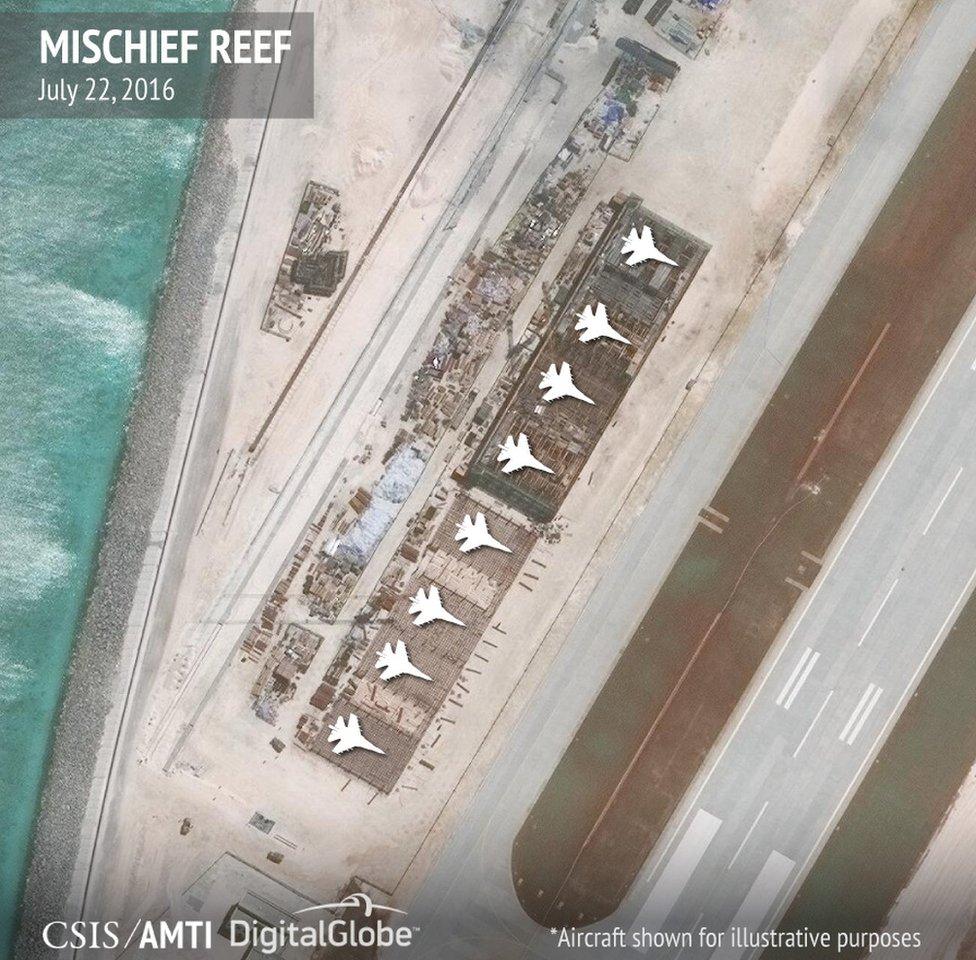
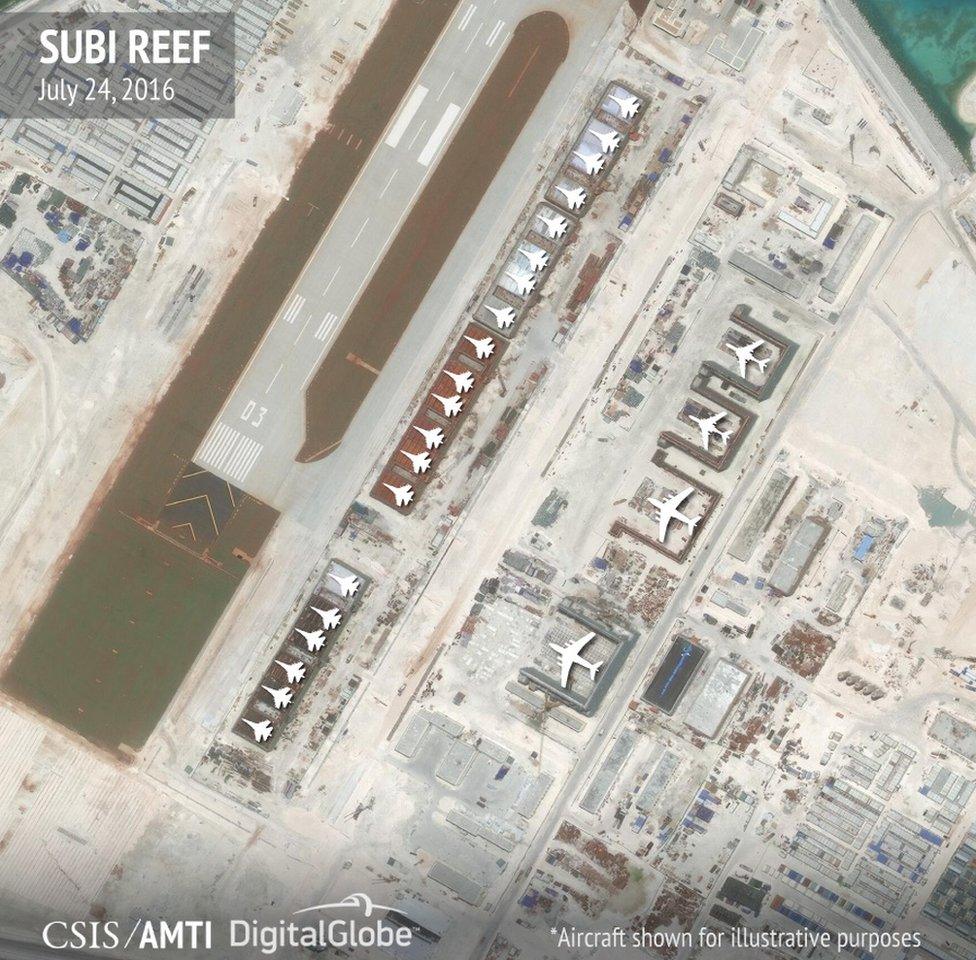
They demonstrate the remarkable pace and scale of China's island-building campaign in the South China Sea, where only two years ago coral reefs and atolls existed.
The pictures focus in particular on the construction of reinforced hangars designed to shelter an array of Chinese People's Liberation Army (PLA) aircraft.
What else is on the islands?
Apart from accommodation blocks and administrative buildings, the images also show a selection of unidentified hexagonal structures facing towards the sea on the three islands. Each island has four of these structures forming a trapezoid shape.
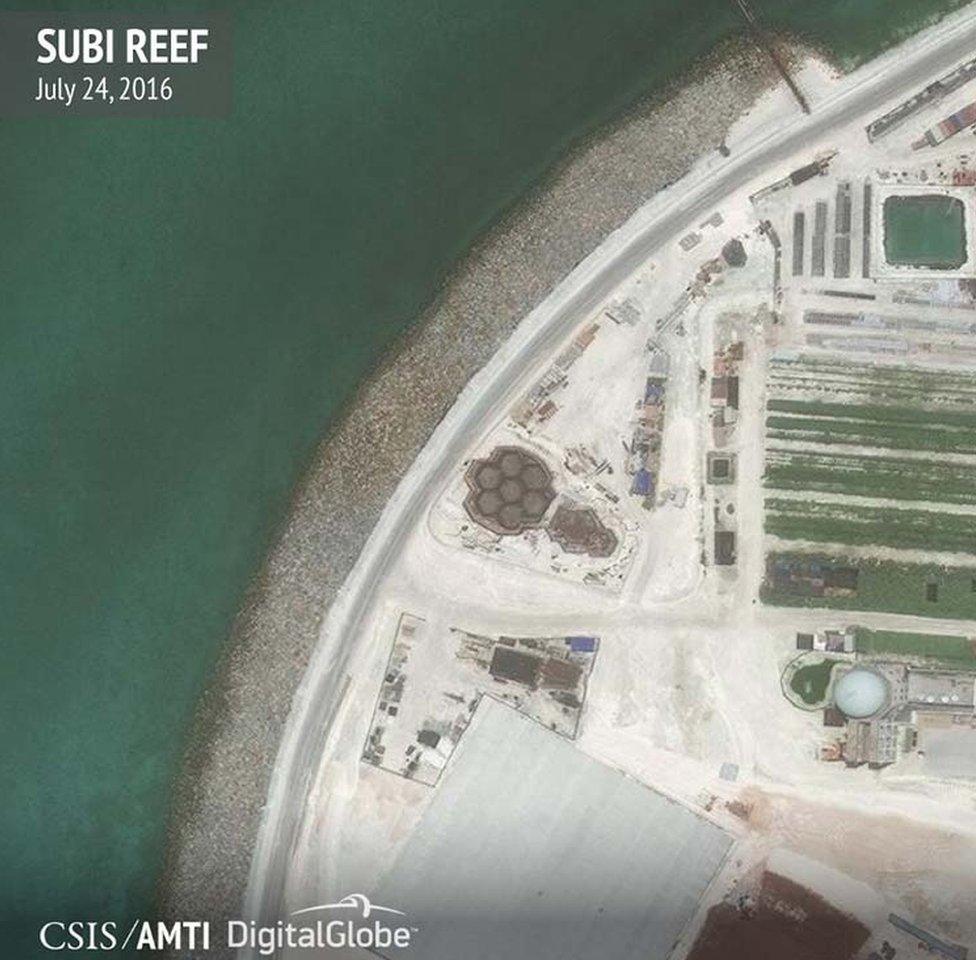
Hexagonal buildings on Subi Reef

In addition, each island also hosts a mysterious group of three towers. There is speculation that such structures are in fact reinforced air defence facilities which could house surface-to-air missile batteries.
Beyond the hangars and air defence systems, we can also see three naval bases readying for operation, including large berthing facilities and harbours for the PLA Navy, the coast guard and other maritime law enforcement agencies.
What does this tell us?
China has embarked on a power projection drive in the region which will considerably extend the range of its naval and air capabilities.
This military construction on the islands indicates that within a few months China will be in a position to deploy fighter regiments on the islands totalling nearly 80 aircraft - a formidable addition to its existing capabilities in the South China Sea.
In addition, the bases will be able to host Chinese strategic bombers such as the H6-K, early warning and surveillance aircraft and long range transport and tanker jets.
Because such airbases are inherently vulnerable to attack, China appears to be deploying a sophisticated air defence network and the command and control infrastructure to protect its new island bases.
But didn't China promise it wouldn't militarise the South China Sea?
In his state visit to the US in September 2015, Xi Jinping stated that China did not intend to pursue militarisation of the Spratly islands.
However, from China's perspective, the islands it claims and the sea space within the nine-dash line are China's sovereign territory requiring necessary defence measures.

US officials quickly sought more specific reassurance from Mr Xi to include all of the South China Sea. Chinese senior figures later qualified Mr Xi's statement by suggesting that defence measures should be commensurate to perceived threat to China's territorial integrity.
Beijing has now blamed US Navy Freedom of navigation operations (FONOPS) for triggering military escalation in the South China Sea, allowing justification in Beijing's narrative for defensive measures on the new artificial islands.
What does this mean for China's neighbours?
In the wake of the Permanent Court of Arbitration's ruling overwhelmingly in favour of the Philippines, President Rodrigo Duterte has yet to react to the appearance of three advanced Chinese airbases within his nation's exclusive economic zone. Perhaps there may be little reaction at all.
The Philippines' navy is almost non-existent, so its only recourse may be to rely on its defence treaty with the US, but Mr Duterte seems to have been reticent towards too cosy a relationship with Washington.
Vietnam on the other hand - another claimant in the South China Sea - apparently has little tolerance for Beijing's activities. Recent news reports suggest that Vietnam has deployed advanced mobile rocket launchers to some of the islands it occupies in the region, putting China's new island garrisons within range of bombardment.
The timing of Beijing's deployment of fighter jets, bombers and air defence missiles on the islands is uncertain, but Vietnam's military deployments will also offer Beijing further justification for its future arms build-up in the South China Sea.
Alexander Neill is a Shangri-La Dialogue Senior Fellow at IISS-Asia (International Institute for Strategic Studies - Asia).
- Published12 July 2016
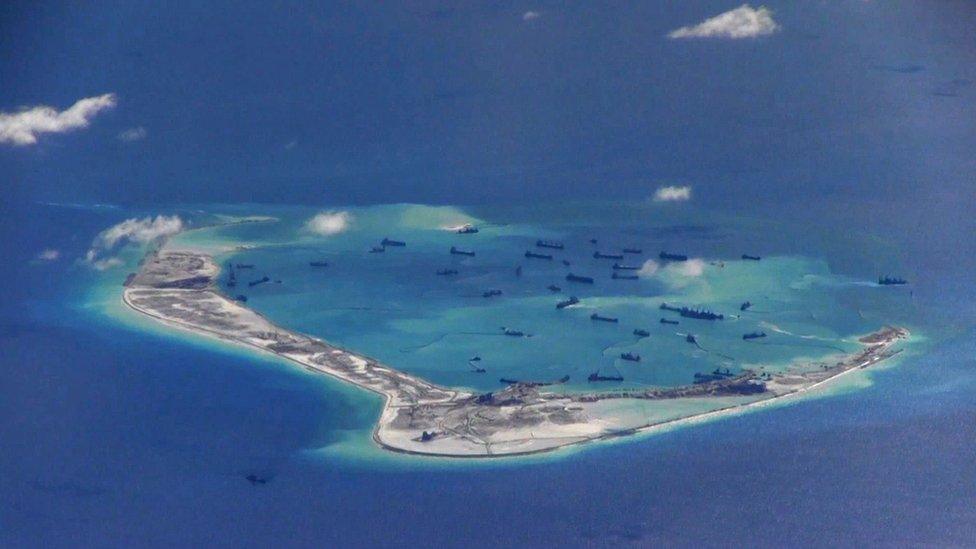
- Published11 July 2016

- Published7 July 2023
